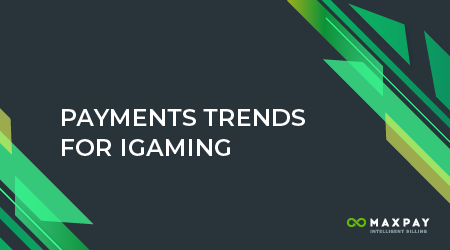
Prior to the Sigma conference, one of the leading events for the online iGaming industry, we have been scanning for trends to help set the direction for the industry’s future possibilities. Discussing payments we interviewed professionals from the fintech sector, Maxpay and Covery, to get insights and perspectives from their side. Here is what they shared.
Machine Learning for a More Efficient and Profitable iGaming Business
Fraud has been an unwelcome but an inseparable part of the payments ecosystem for as long as payments have existed, iGaming and gambling industries being no exception. The total amount of losses from fraud in 2017 had been about $100 billion. According to forecasts for 2018, payment professionals expect this figure to top $120 billion, which is an equivalent of the GDP of Morocco, a country with a population of 35 million people.
High rates of fraud and chargebacks not only cause financial losses but more importantly can lead to sanctions by Visa, Mastercard and can easily cause merchants to get their payment accounts closed.
Fighting Fraud and Chargebacks
This is why businesses that accept payments must be better prepared for the inevitability of fraud and work to implement solutions to fight it. Because by definition fraud is unpredictable and varied, a lot of innovations to fight it can’t rely on human analysts and employ artificial intelligence (AI) in the key role of early detection. Fraudulent attacks are continuously growing in sophistication and inventiveness, and as soon as an effective new solution against fraud is developed, fraudsters immediately develop new approaches. At times it seems that the risk professionals are always a step behind, but using machine learning tools can help solve this problem.
Both businesses and the majority of payment processors tend to adopt only formulaic short-term responses to fraud dangers that don’t necessarily reduce risk effectively in the long run. A better approach involves treating fraud as a persistent threat and to proactively build risk management expertise using a focused anti-fraud platform such as Threat Metrix, Kount, Sift Science, Simility and Covery being among the leading ones.
The goal of each fraud prevention system rests in a fine balance between avoiding false positives (good customers identified as fraudsters) and false negatives (fraudsters identified as good customers). Moreover, a reliable risk management process contains routines with periodic examination routines by risk managers, especially when a new product is added and when the billing logic changes.
Analyzing Affiliate Traffic and Identifying Whales
In every online business it is important to track traffic quality, and in this and related fields machine learning is delivering on its promise. Machine learning’s ability in identifying patterns and anomalies has made several breakthroughs in helping detect data breaches. This risk management task is most naturally suited as a product extension for payment service providers, combined with anti-fraud and risk analytics. But one other area where the same approach that helps prevent reputational damage to both the iGaming operators and payment processors has been unexpectedly promising is customer segmentation.
The area where machine learning has a lot of untapped potential is traffic quality analysis. For example, Covery recommends analyzing data at the affiliate level, which means using the platform to check transactions from each traffic “batch” daily and watch, for example, not only the traffic to transaction conversion ratio, but also micro-insights like cards associated with a single email (most likely prepaid cards) to cards associated with several emails. This approach can help evaluate affiliates without reputation, easily and reliably detect affiliate use of grey traffic instruments, such as fraudulent prepaid card generation, use of fake emails and other unsound practices. Comparing clicks and visits in the public zone, user actions in the private zone, an analyst can score two different affiliates based on which traffic source offers the most organic traffic, for example. And do this while detecting and preventing outright fraud.
Similarly to identifying grey traffic or fraudsters, the same tools can help businesses identify something good – like the “whales”. Identifying customers who spend a lot for most businesses is a hit or miss proposition. With AI, however, user actions help define the “whale behavior” and the model can be built using a mix of approaches, for example, based on payment history data: the number of payments per day, per month, and so on. Then, in a similar way that customer loyalty is nurtured in e-commerce, a client funnel for customers unlikely to initiate chargebacks and the perspective whales can be identified and nurtured. Machine learning approaches don’t provide definite answers, but the analysts at Maxpay use this technique so that when their customers’ clients reach a threshold of being a whale with, say, 87% probability, the analyst recommends customers’ sales and marketing teams to initiate targeted campaigns.
Accepting All Payments
The iGaming industry has shown its ability to constantly adapt, not only due to ever-changing regulations but also to keep pace with the rapid evolution of mobile and online gaming.
Social and Branded Payments
Social payments, first popularized by PayPal, have since expanded into a number of platforms with multiple payment functions including Venmo, Snapcash, Google Wallet, Apple Pay and Twitter Buy. The use of social media to transfer money to another person or business has proven to be a useful tool not only for individuals but also businesses, which can either use existing services or create their own proprietary ones. Big consumer brands like Starbucks have already launched an app that allows customers to load money onto a virtual gift card which can be scanned at the register. Companies with existing loyalty programs and smaller brands are now exploring the opportunity to create their own payments ecosystems.
Real-Time Payments Revolution
Real-time payments that provide immediacy, certainty, and bank-grade security are here. While little noticed, the deregulation and technological possibility are enabling consumers and business to experience faster payments than ever before: While only 25 real-time payment systems were operational worldwide in 2017, 40 were live in 2018, and 67 percent of consumer payments are now made electronically. Because real-time payments enable a lot more information that can be exchanged with transactions, applying more analytics can help improve iGaming business performance and improve efficiencies.
Banking Fragmentation
The iGaming operators, being on the cutting edge of online payments acceptance and payouts, need to be on a lookout for potential partners in payments to meet the constantly growing expectations of their clients. Customer focus is driving a trend of services being combined in unusual ways to meet each specific customer segment’s pain points, such as a wallet and payment acceptance hybrid Genome. This new service allows opening MIDs, IBAN accounts, paying salaries, transferring money internationally and between wallets or other accounts, accepting payments, exchanging currencies and all this via an app without a single visit to a bank. Web and app services like this will elevate the customer experience to a different level.
The Payment Trends Takeaways
Both iGaming operators and their service ecosystem are facing a torrent of changes affecting how customer service is delivered, how risks are managed and which business models will stand the test of time. Only by working together the industry can reduce risks effectively while offering a high level of customer satisfaction in the long run. From the payments perspective, intelligent use of machine learning and expanding payment methods can offer promising new solutions.



























